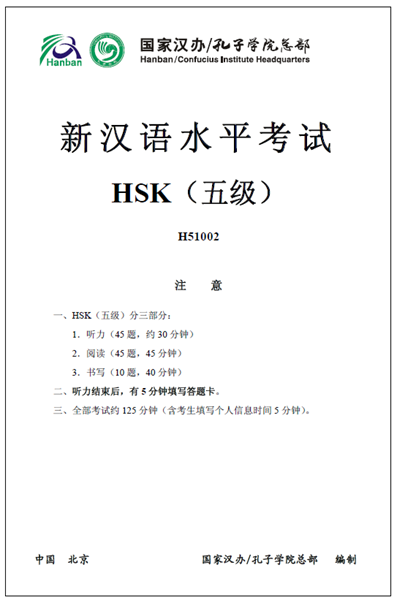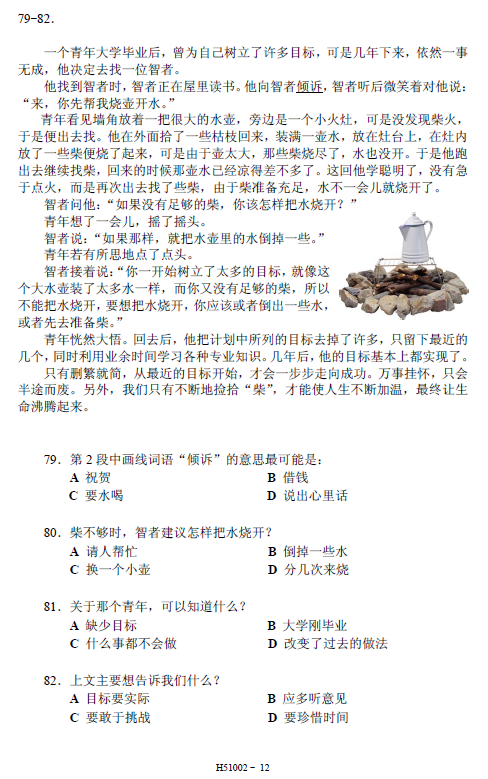Assessing Progress with the HSK Exams

In my last post on learning Mandarin, I talked about how long it takes to learn the language. I discussed that like learning English, there is no real end point to the learning, only stages of achievement. So how can you assess where you’re at? The answer is the HSK and HSKK exams. So what are they, and how do they match other definitions?
US State Department Proficiency Levels
The US State Department offers a definition of language proficiency here. It defines these levels:
0 – No Practical Proficiency (No practical speaking proficiency. No practical reading proficiency).
1 – Elementary Proficiency (Able to satisfy routine travel needs and minimum courtesy requirements Able to read some personal and place names, street signs, office and shop designations, numbers and isolated words and phrases).
2 – Limited Working Proficiency (Able to satisfy routine social demands and limited work requirements Able to read simple prose, in a form equivalent to typescript or printing, on subjects within a familiar context).
3 – Minimum Professional Proficiency (Able to speak the language with sufficient structural accuracy and vocabulary to participate effectively in most formal and informal conversations on practical, social, and professional topics Able to read standard newspaper items addressed to the general reader, routine correspondence, reports, and technical materials in the individual’s special field).
4 – Full Professional Proficiency (Able to use the language fluently and accurately on all levels pertinent to professional needs. Able to read all styles and forms of the language pertinent to professional needs).
5 – Native or Bilingual Proficiency (Equivalent to that of an educated native speaker. Equivalent to that of an educated native).
On that scale, I’m heading towards 3.
HSK Exams
A much more accurate scale is provided by exams that are run world-wide and controlled by the Chinese government. These are called the HSK exams (Hànyǔ Shuǐpíng Kǎoshì or 汉语水平考试 ). Hànyǔ means “Chinese” (ie: language of the Han people), Shuǐpíng means “level”, and Kǎoshì means “exam”. HSK is a standardized proficiency test of Standard Chinese language, notably, for non-native speakers.
At level 1, you need to know 150 words (174 characters). It is described as being designed for learners who can understand and use some simple Chinese characters and sentences to communicate, and prepares them for continuing their Chinese studies.
At level 2, you need to know 300 words (347 characters) in total (not extra over level 1). It is described as being designed for learners who can use Chinese in a simple and direct manner, applying it in a basic fashion to their daily lives.
For both levels 1 and 2, all characters are provided, along with their pinyin representation. The tests only include reading and listening. They have no writing questions.
At level 3, you need to know 600 words (617 characters). It is described as being designed for learners who can use Chinese to serve the demands of their personal lives, studies and work, and are capable of completing most of the communicative tasks they experience when visiting Chinese areas.
At level 4, you need to know 1200 words (1064 characters). It is described as being designed for learners who can discuss a relatively wide range of topics in Chinese and are capable of communicating with Chinese speakers at a high standard.
At level 5, you need to know 2500 words (1685 characters). It is described as being designed for learners who can read Chinese newspapers and magazines, watch Chinese films and are capable of writing and delivering a lengthy speech in Chinese.
Notice that the number of words required increases exponentially. I’ve passed HSK 3, prepped for HSK 4 about a year and a half ago, and am comfortable with it. I just didn’t get time to take it but will soon. For just over a year though, I’ve been prepping for HSK 5. It’s far more of a challenge. Levels 3, 4, and 5 include writing tests. I’m fine with those on a computer, not so great with a pencil like they used at RMIT when I did the HSK 3 exam.
Note that HSK 5 is also the level normally required for foreigners who want to attend Chinese universities. To give you an idea of how much Chinese you would have learned at that point, here’s an example question from a recent HSK 5 exam:

Above those, there is level 6 where you need to know 5000 words (2663 characters). That’s described as being designed for learners who can easily understand any information communicated in Chinese and are capable of smoothly expressing themselves in written or oral form.
Level 6 includes a requirement to write an essay.
It would be awesome to ever get to level 6, but given each level is basically twice as hard as the previous, that might take me a while.
HSKK Exams
As well as the HSK exams, you can take HSKK exams. These are spoken conversation exams and have three levels:
Beginner (maps to HSK levels 1, and 2)
Intermediate (maps to HSK levels 3, and 4)
Advanced (maps to HSK levels 5, and 6)
I haven’t taken any of these yet. I had a friend who did the HSK 3 exam with me and she took the Intermediate exam at the same time. She found it quite hard.
Should you do the exams and where are they?
If you have a real interest in learning Mandarin, I think you should combine that with testing, to make sure you really are getting somewhere. They are held all over the world, in most larger cities. They usually happen twice each year.
Previous exams are available as samples to let you test yourself.
2018-11-02
